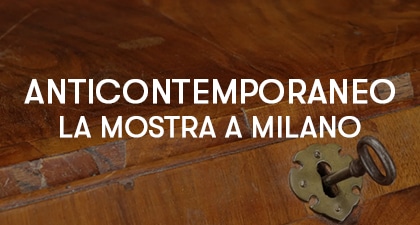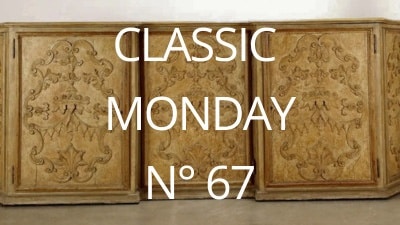
Protagonista del nostro Classic Monday odierno è una credenza a doppio corpo. Mobile molto ricercato per la sua funzionalità e versatilità, è stato declinato con diverse tipologie decorative.
The double-bodied wooden structure of our sideboard is adorned with finely carved tiles, with volutes and phytomorphic elements.

In corner tiles the carving still takes up a typically taste Mannerist, with the revival of elements used in decoration grotesque. In fact, fine but articulated purposes are represented foliaceous arabesques in which the work of the chisel of the artist.
The decoration of the panels on the front and sides denotes instead attention to the prevailing Baroque taste of the seventeenth century. The part central is left in full field, while the carving is concentrated along the perimeter, where foliaceous elements and flowers are depicted.
Also the cimasa is richly decorated and carved with a baroque taste, with symmetrical volutes, flowers and elaborate pendentives, which enliven the silhouette of the sideboard.
The use of sixteenth-century decorative themes also applied to furniture made in the seventeenth century, even reaching the early eighteenth century.
A sacristy very similar to our double body is in fact dated around 1715. It is a piece of furniture attributed to the carver Giovanni Marchiori for the parish church of Caviola (Belluno).

Our sideboard has a carving decoration similar to this, but the slightly more archaic style perhaps allows us to anticipate the dating, placing it between the end of the seventeenth and the beginning of the eighteenth century.
One design so fine but at the same time sinuous had to necessarily require a great manual skill but also a knowledge of the raw material. The presence of veins and knots In fact, it made it more difficult for the craftsman to work, who He had to know the essence of the wood he was working.
It is possible to connect the sideboard with the vast production of furniture in the Veneto area, especially with the Belluno one, thanks to possible comparisons with the production of furniture in this geographical area.
At the Civic Museum of Feltre are in fact preserved several examples of carved wooden furniture. Among these a solid walnut chest of drawers but above all a canterano decorated with phytomorphic arabesques. This elaborate ornamental motif presents a mode of execution similar to that of ours, with the thin swirls in relief and the clearly visible signs of the bulinatura.
This particular woodworking, also adopted in our sideboard, enriches the decorative effect, thanks to the contrast that is created between smooth and machined surfaces, further enlivening the carving decoration.






















